
 |
Welcome to Research Group for Process Metallurgy of Iron and Steel Making |
 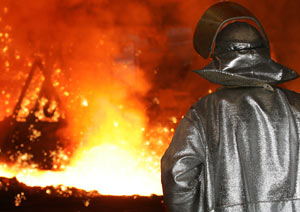 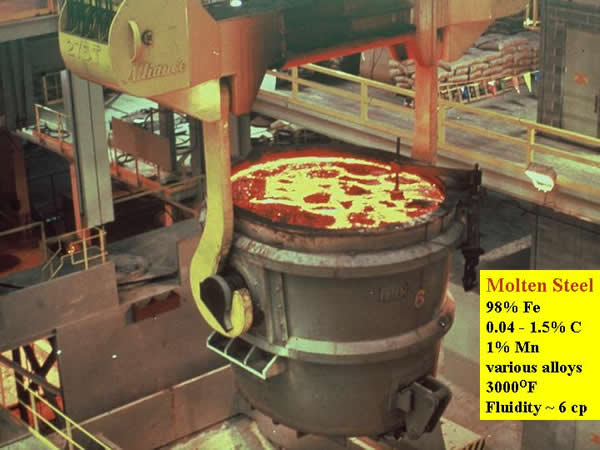 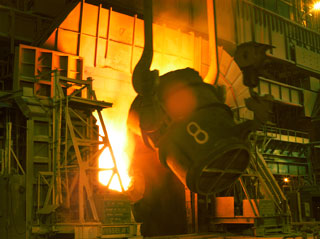 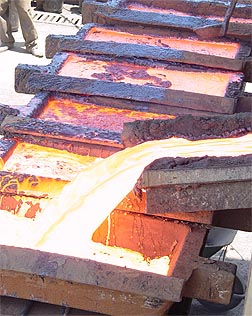 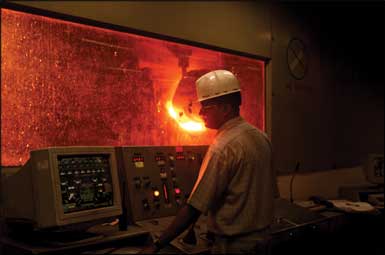 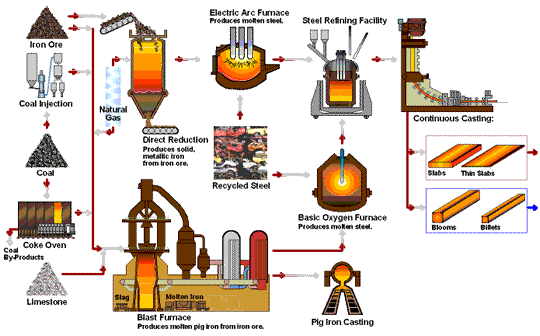  |
|||||||
| Home | Education and Experience | Research Interests | Current research/projects | Teaching | Publications | Group | Photo Gallary |
Challenges faced by ferrous metallurgy at academic front in India
As India is looking forward to increase its crude steel production level to 300 million tons by 2025, which could be an overambitious plan unless we focus more on process metallurgy areas like raw materials, iron making, steelmaking and ferro-alloys production in addition to associated developments in the area of automation control, mathematical modeling simulation and instrumentation. A lot of information by ministry of steel and planning commission has already been compiled and put as online documents like ' Report of working group on steel industry for the 12th five year plan1', 'National steel policy 2012 draft3' and ' A roadmap for R&D4' etc. From analysis of all available information and future projections of steel requirement and addition of very high volume of steel production capacity, it is very much clear that there is great need for the development of research capability as well as expertise in process metallurgy area of iron and steelmaking.
Even though there is considerable demand and national requirement to develop this area, there are lot of challenges which our academic institutions are facing as follows:
1. Academic institutions are critically understaffed in these areas. Despite the fact that number of students in these areas have been tripled in last 8-10 years, the fact that very negligible number of students choose to work in these areas. This is very disturbing situation when India is projecting huge requirement of manpower in next 10 years to achieve 300 million tons by 20253. On one hand India requires huge number of experts/under graduates/post graduates/doctorates to be recruited by Steel Plant in various capacities considering future demand on the other hand academic institutes are struggling with shortage of faculty members and students interested to work in these important areas.
2. The academic course content in metallurgy department has been tremendously diluted over the last many years with more interest towards materials science domain. As we all know that any development in key areas of ferrous/non-ferrous extraction requires very strong base in mathematics, computing and fundamentals (Thermodynamics, Kinetics, Transport phenomena/CFD and many other knowledge based areas), the kind of course structure which student should undergo should have all these essential components. As per the recent report published by working group on steel industry for twelfth five year plan, Ministry of Steel1, at present there is a mismatch between the needs of steel industry and skill development process in our educational system. Firstly there is a shortage of top-end engineering colleges who award a degree in Metallurgy. Secondly, even in the existing premier colleges, the focus is more on ‘Materials than Metals’1. Since the importance of metal industry is growing, educational institutions should offer degree courses separately for Metallurgical engineering and Materials engineering1. The change will require training of faculty members which may be facilitated by the steel industry through creation of Steel Technology Centers. Thirdly there is an urgent need to reorient the curriculum of metallurgical engineering courses to make them more relevant to the changing demands of the steel/metal industry1. There is need to revisit the curriculum to prepare metallurgists/engineers not only for steel operations but also for R&D work1. In order to attract bright students to R&D there is a need to substantially increase the scholarships offered to P.G./Ph.D. students pursuing higher education/research in process metallurgy of iron and steel1. Steel industries may sponsor number of projects for students training of applied research problems for their MS/Ph.D.
3. With the increasing fraction of electives in course curriculum, by in large students wish to avoid those courses which have strong fundamentals/computing or which requires analytical/quantitative abilities as well as larger hours of interaction sessions.
4. There is also shortage of staff/faculty members in these areas and they are also overloaded in many respects. One reason of shortage is because very few have opted to go for higher studies in these areas in past and majority of talented and well qualified garduates opted for non-core areas like software, marketing and finance. The same trend is going on even today also. Ultimately shortage of faculty staff can be solved only if some students are going for higher studies in these areas so that faculty members for future can be developed.
5. There is a requirement to revamp ferrous metallurgy syllabus and academic research program with the involvement of industries. This can become more feasible if industry representatives are present and involved in various committees/council of academic institutes where key decisions are taken3. The steel industries should also come forward with active participation as well as collaboration in terms of joint projects and research centers.
6. One of the reasons of the shortage of manpower in these areas is due to decline of interest in pursuing career in core metallurgical industries amongst B Techs, M Techs and PhDs1. There is a need to change the common perception about steel industries. Steel industry is no longer a dust and smoke emitting industry as most of the people think. The students do not get exposure to practical Iron and Steel production processes in most of the academic institutes. Students are under the impression that the working atmosphere in steel plants is hot and dusty. They are not even aware that the steel industry has modernized itself considerably in the last many decades. The interesting concepts of mathematical modeling, automation and information technology are used extensively in Steel Industry1. Therefore those talented students who are looking after IT, finance related jobs, should know that steel industry can provide them even much better prospects and job satisfaction1.
7. Development of experts in specific areas of iron and steel research requires lot of time and patience. Since most of the research is directly linked to the performance at end user/shop floor, recognition of the performance happens only if those research projects are implemented successfully at industry front. Therefore industry would value the academic researchers only when they become experts and prove their mettle1. An initiative has been made by our group to integrate with neighboring JSW Steel Plant on number of short term student projects where student is working on a given problem by JSW Steel Plant, developing concepts and mathematical models on given research topic which is validated by shop floor data from JSW Steel Plant. Such interaction have provided a learning experience to the students for carrying out industrial research combining academic expertise with shop floor experience. Similar models of expert development are required to be worked out in association with other steel industries and academic institutions to bridge the gap of understanding and develop more number of potential experts in these areas.
8. Integration with other departments (like Chemical/Mechanical/Aerospace/Civil) along with strong connection with steel industries may result in a joint industry-academia interdisciplinary centers where research may be performed in key applied areas related to energy, raw material and waste utilization. Like other key core industries, steel industries are also facing problems in these areas. Good quality raw material (like iron ore with high Fe%) will not be available in future in needed quantity so there is requirement to develop technology in the area of waste and lean quality raw material utilization, energy recovery and management, waste recycling, alternate iron-making etc. For most of such cases technology is not available. It will also not be developed by China, Japan or any other country as they had already saturated with respect to steel demand. Therefore a lot of research and for that large number of manpower (Faculty/students) are needed in this area in our country. One of such initiative has already been taken by our group in the form of ‘JSW-IITM Center for Applied Research’ in collaboration with JSW Steel and Chemical Department of IIT Madras. The first project on dry slag granulation and energy recovery is underway.
9. Although there is guidelines from Ministry of Steel and other key national institutions projecting the requirement to develop huge manpower in this important area. There is another challenge towards its implementation at the ground level. Being a democratic system everywhere and in accordance to the phrase ‘It requires majority to create a majority’, perhaps the effective implementation with regard to the recruitment of large number of faculty members and students in these areas as per requirement is not possible unless there are very strict guidelines to ensure minimum fraction of total strength to be recruited irrespective of whatever is the democratic decision of local bodies/committees. After all national agenda should be the top priority for implementation irrespective of anything else.
10. Creation of a separate department/interdisciplinary center specific to the process metallurgy of ferrous/non-ferrous metallurgy could be the solution to address these issues however it also requires a critical mass of faculty members and students involved with this area to run such centers/departments in an effective manner. Therefore issue of shortage of students/staff/faculty members has to be addressed critically and solution should be found before its too late. Otherwise a situation will come when no option will be available to us than to depend upon China and Japan for manpower and experts requirement even in these key areas of national importance.
11.There should be a need for correct projection of the requirement and future prospects in these areas at the websites of academic institutions. Since the majority strength is from materials science domain in 'Metallurgy Departments' at various academic institutions, students should be given the proper information about the facts regarding the future prospects and importance of these areas which are very much important in national interest.
12. Special recognition may be given to those who opt to work in these areas. Working in the area of Iron and Steel is directly linked to the contribution in national economy.Considering the challenges, efforts and hard work required to work in these important areas, Govt. of India may start some recognition scheme to motivate more and more number of people to choose this area as their future career.
Similar thoughts have been expressed in recents reports from Ministry of Steel, and some Excerpts related to human resource development has been given at the following links:
References:
3. National Steel Policy 2012 (draft), Ministry of Steel.